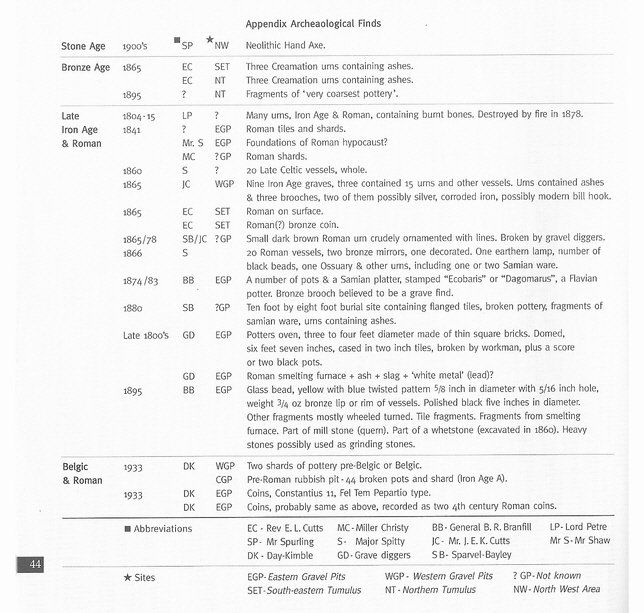Victorian Era Discoveries
The Victorian era was the most fruitful time for finds in Norsey. Although the interpretations of these discoveries were made by gentlemen of the leisured classes, it was humble labourers who actually unearthed many of them. These men were exploiting the gravels left by the post-glacial streams which flowed over the area, for surfacing local roads and also later for the construction in the 1880s of the track bed for the new railway lines.
An example of a discovery made away from the gravel beds In 1865, was by the Revd E. L. Cutts who supervised the excavation of a trench from the western edge to the centre of the eastern burial mound. The only way to see it is to take the path which runs closer to Break Egg Hill. Fragments of Roman pottery and an indecipherable bronze coin were uncovered in the process, perhaps indicating some disturbed later internments, but the central grave group of three large inverted cinerary urns (vessels containing cremated human remains) clearly points to Middle Bronze Age origin.
The second barrow, which now no longer exists, lay on the opposite side of the Wood alongside Norsey Road and was also trenched by Cutts in 1865. A central group of seven urns was found, only one of which contained cremated remains. It was investigated once more in 1895, disrupted by residential developments in the 1950s and finally overlain by a house and garage around 1965. This second area is not a part of the scheduled Ancient Monument.

